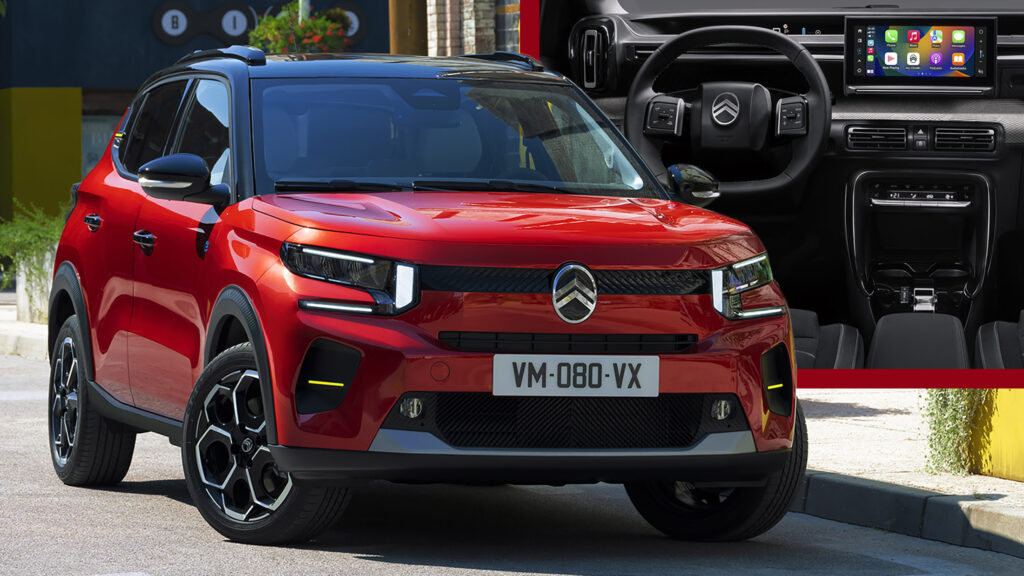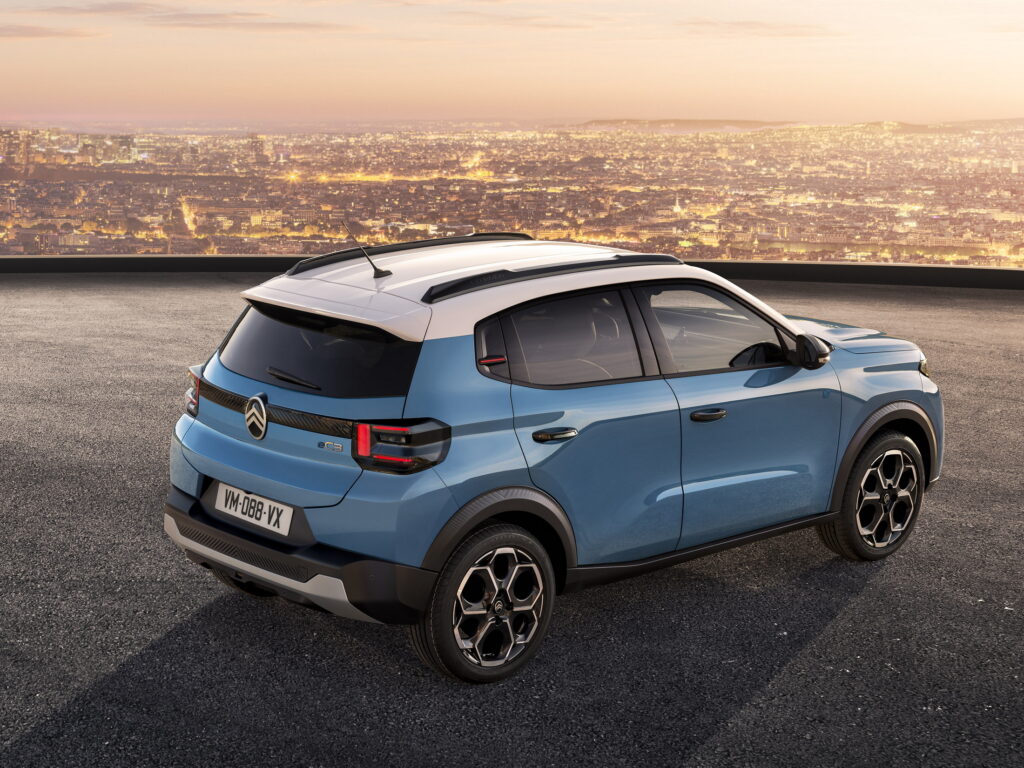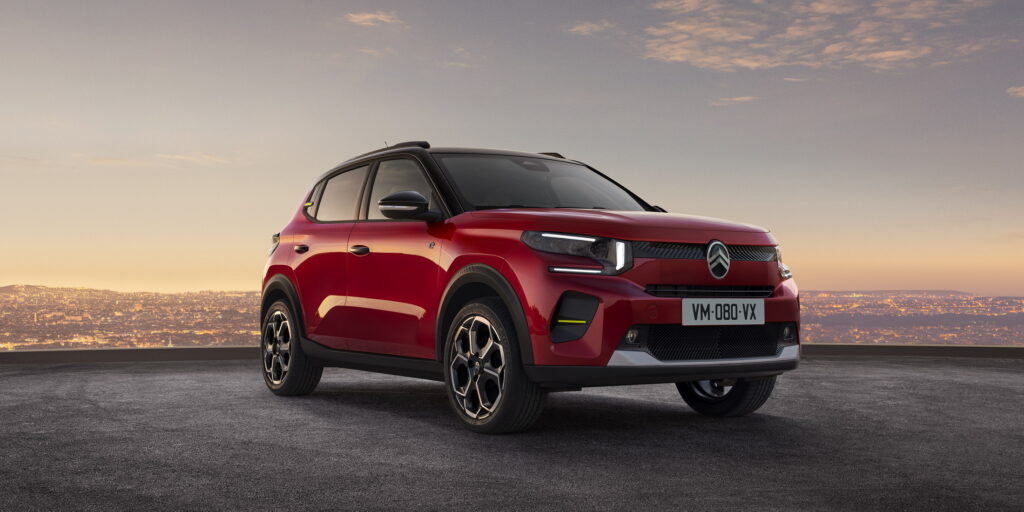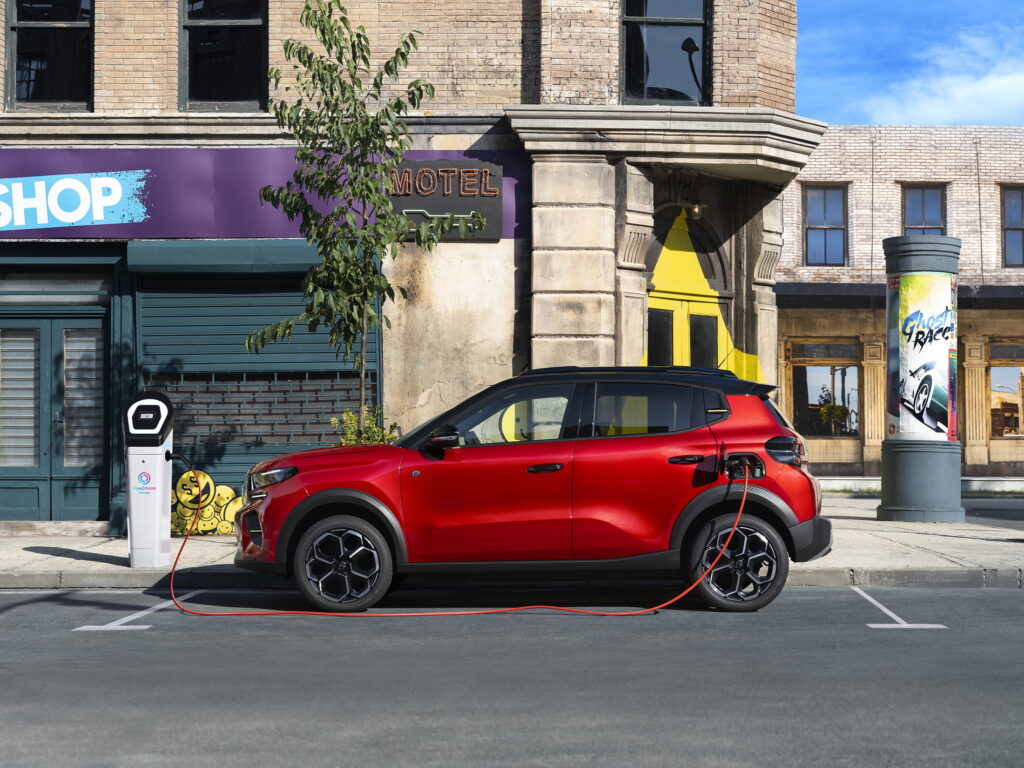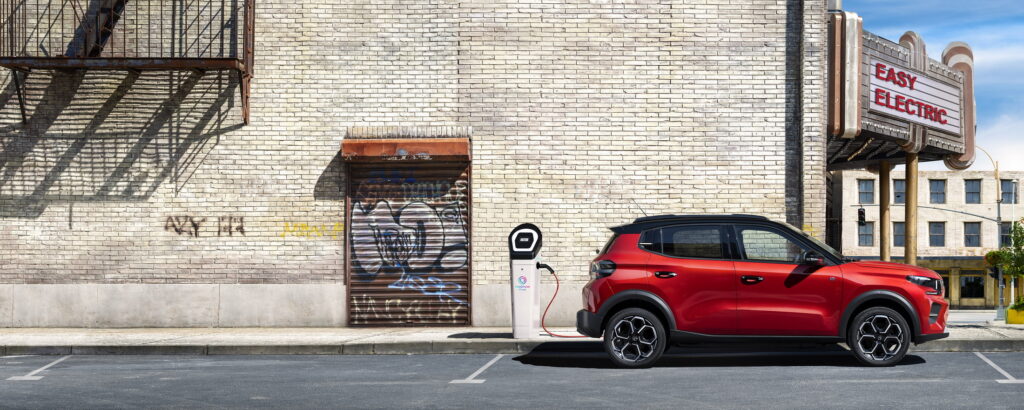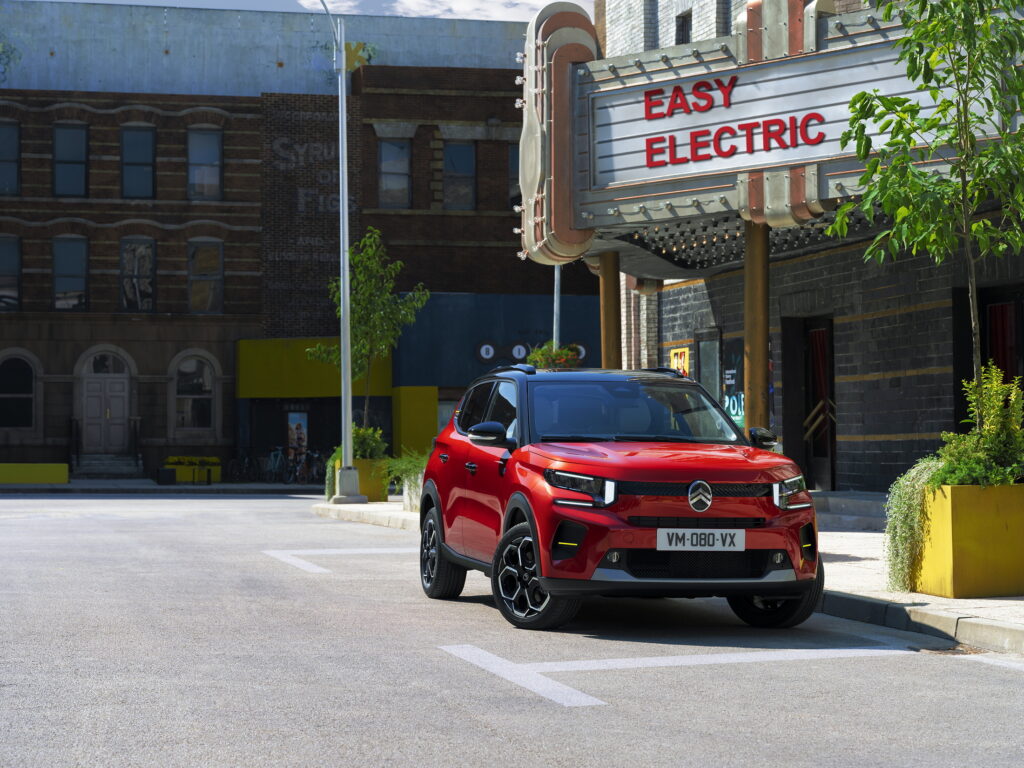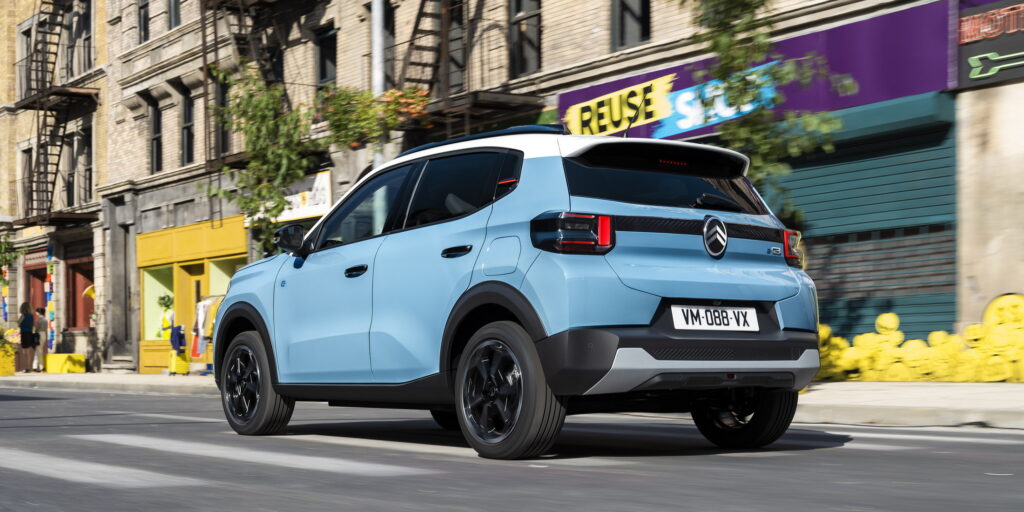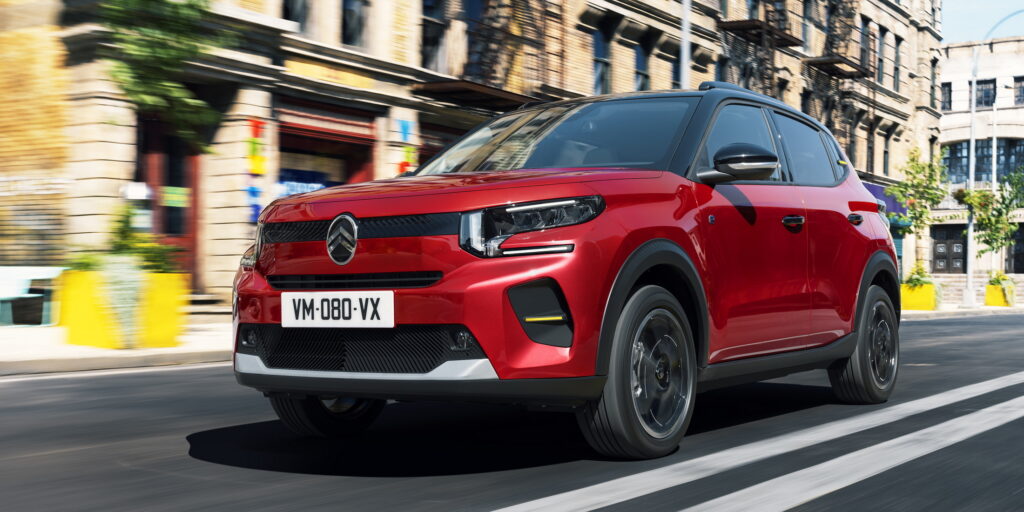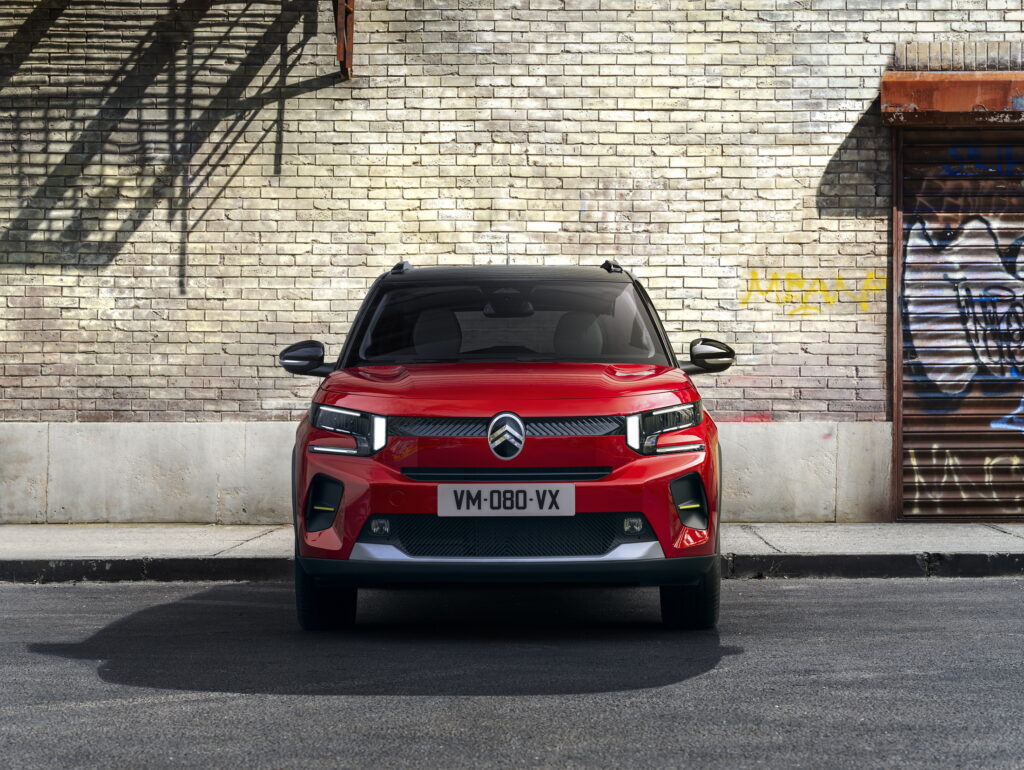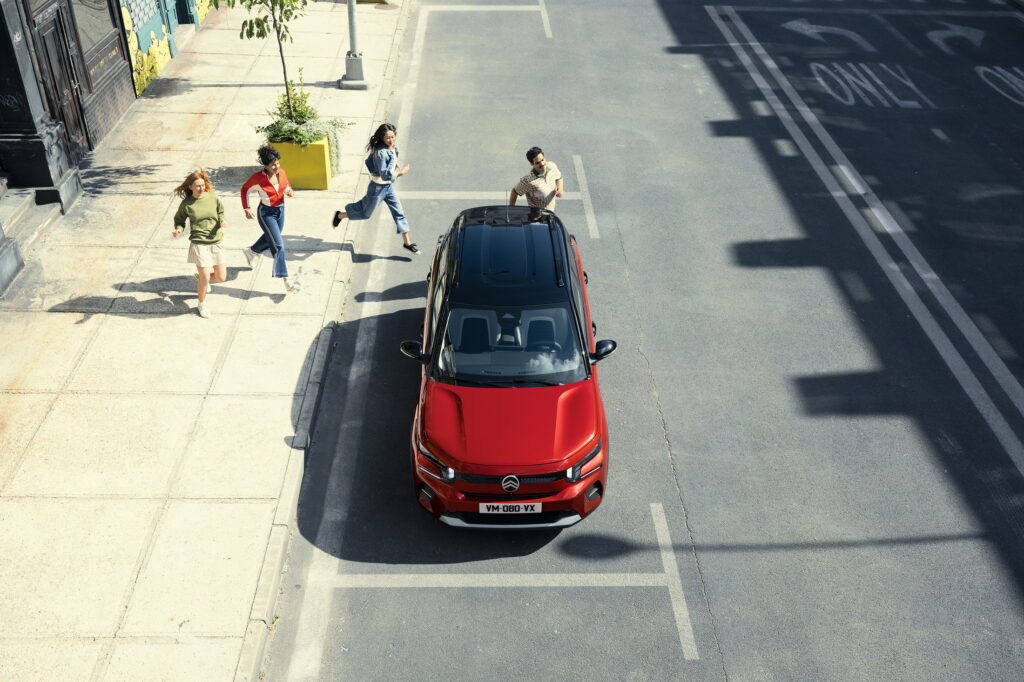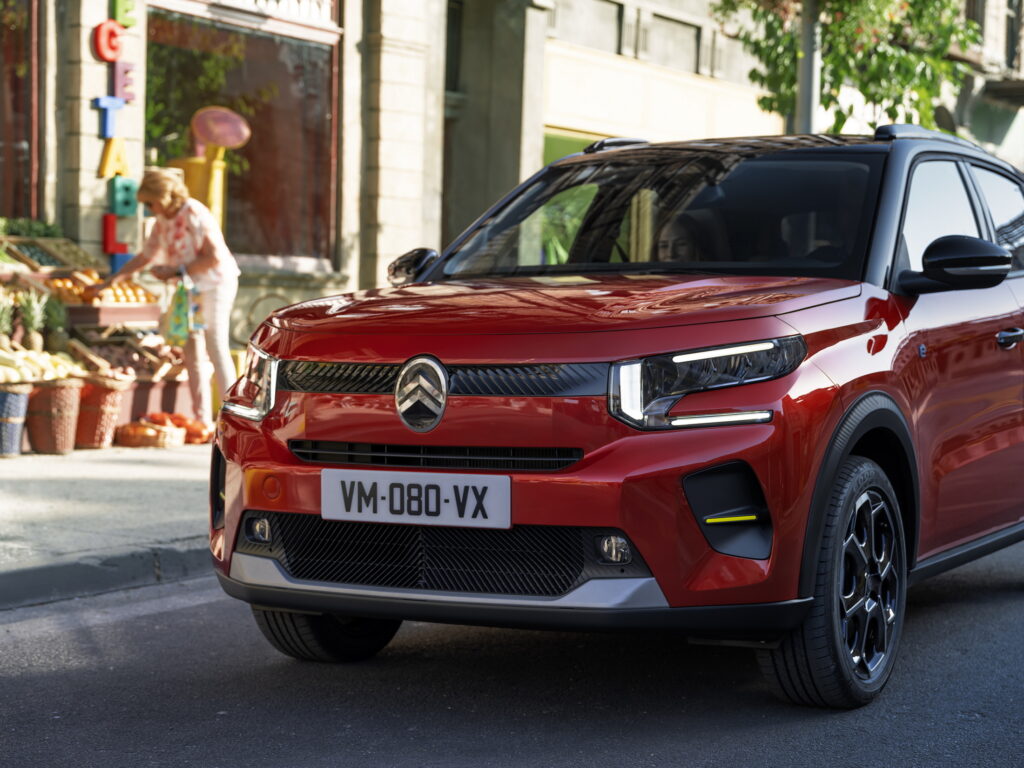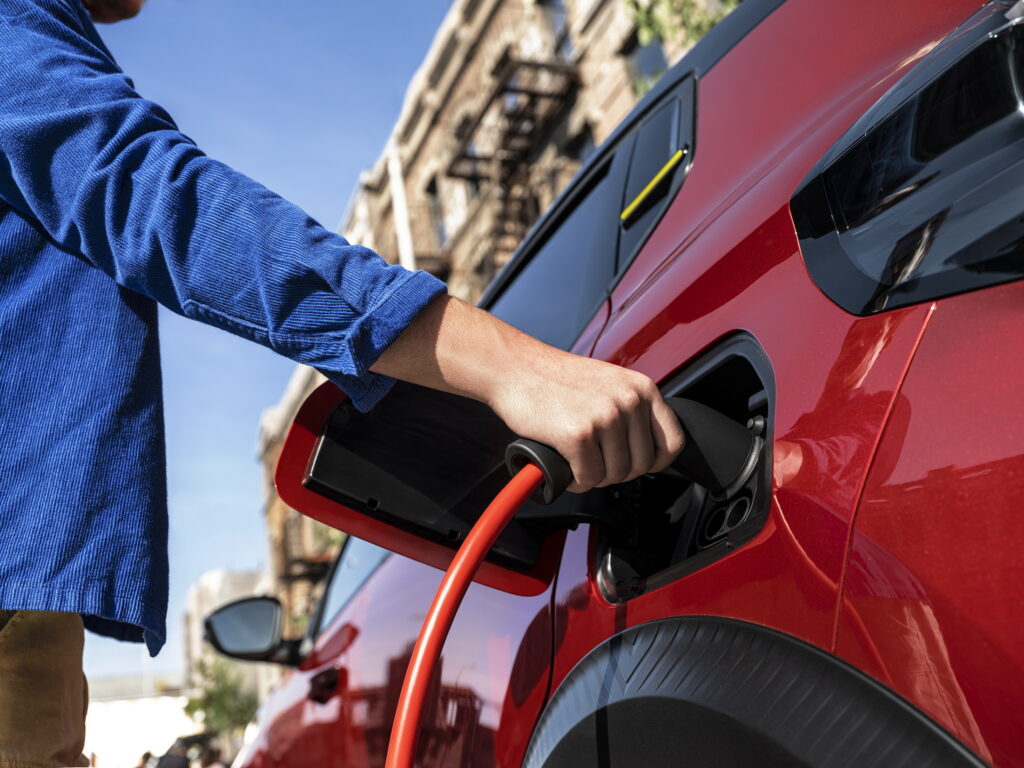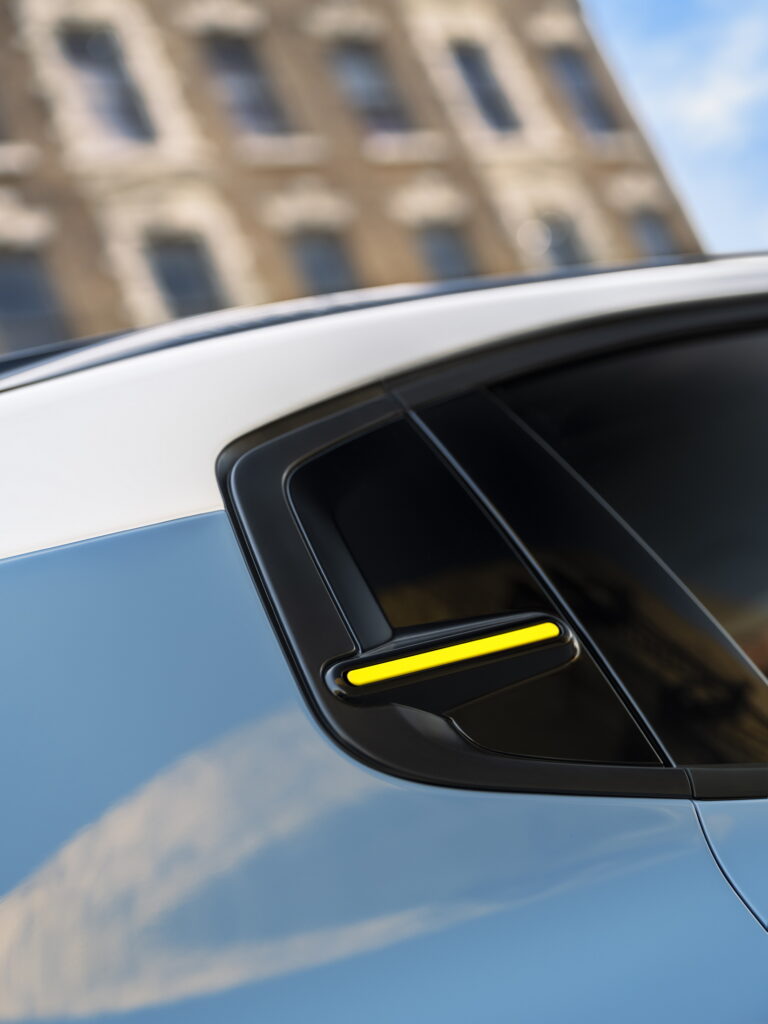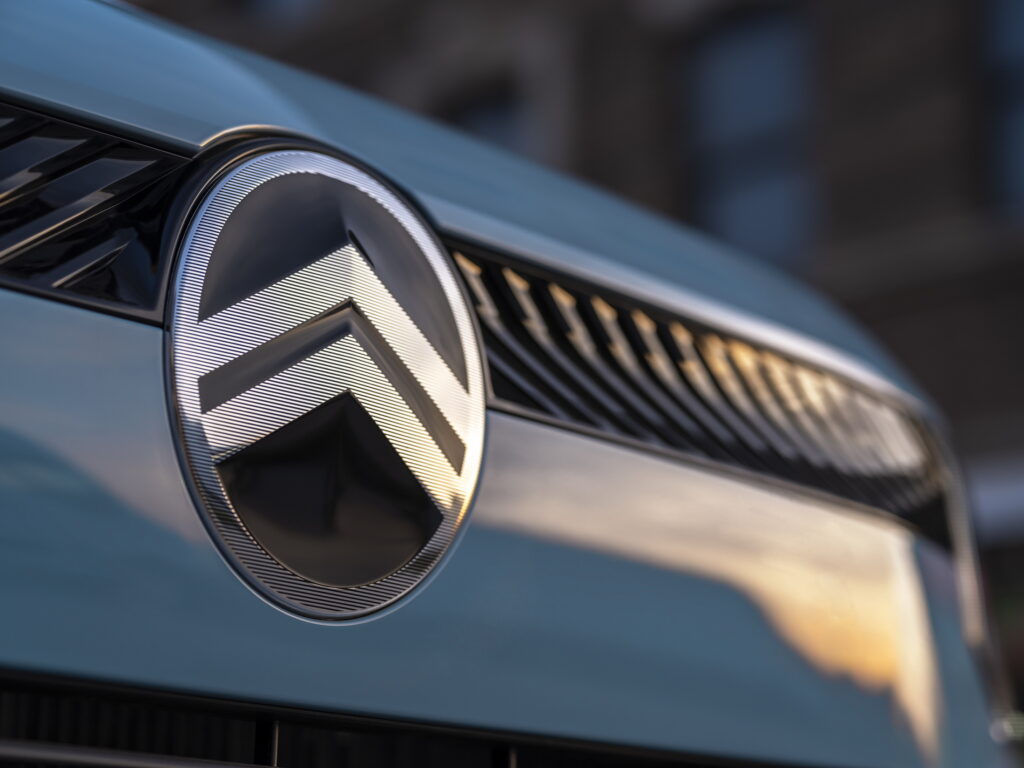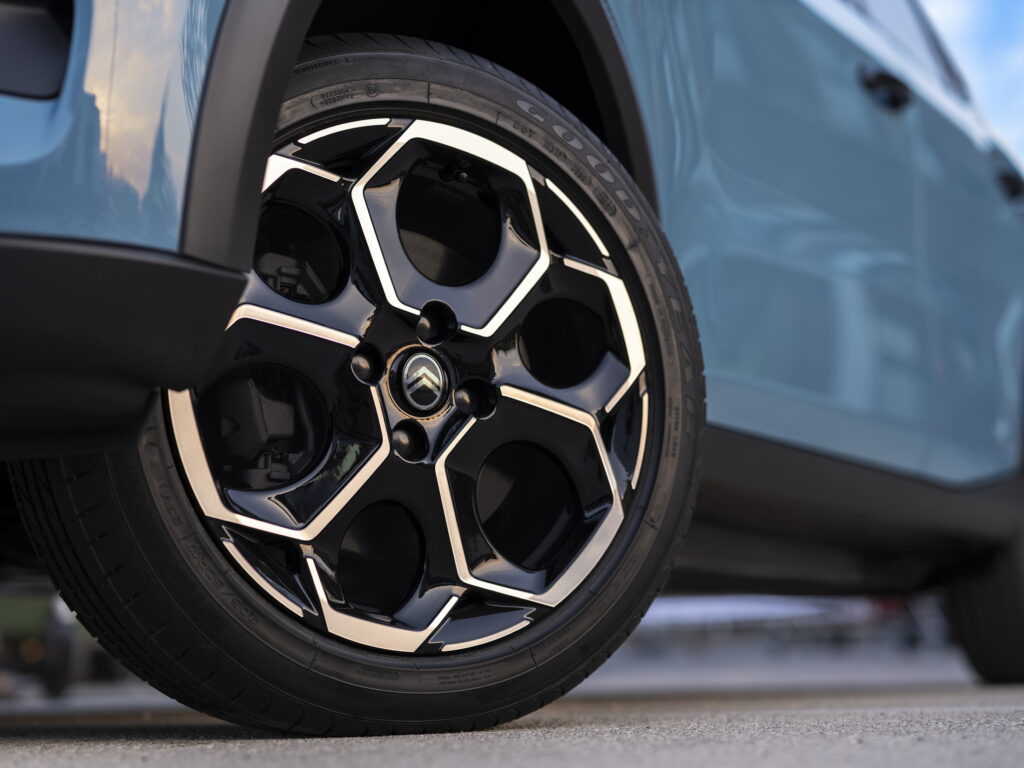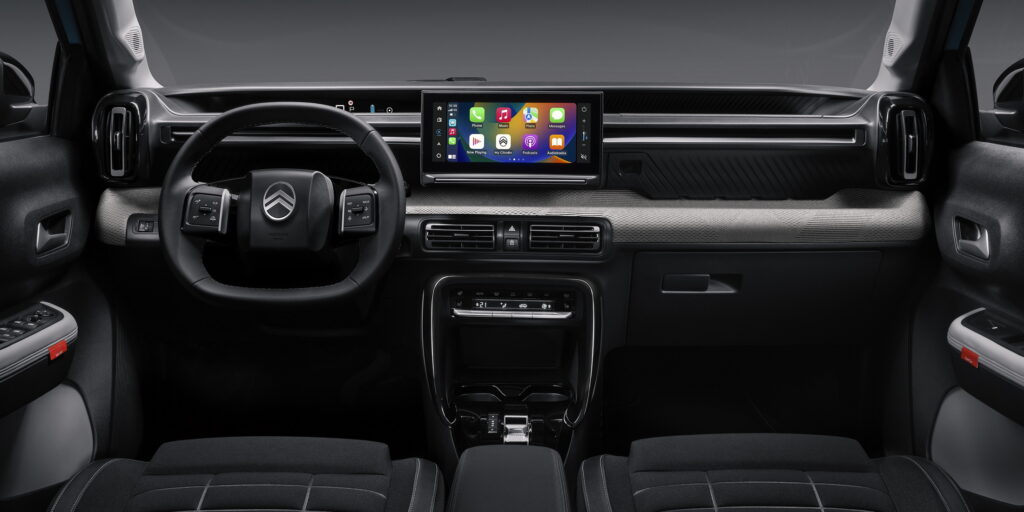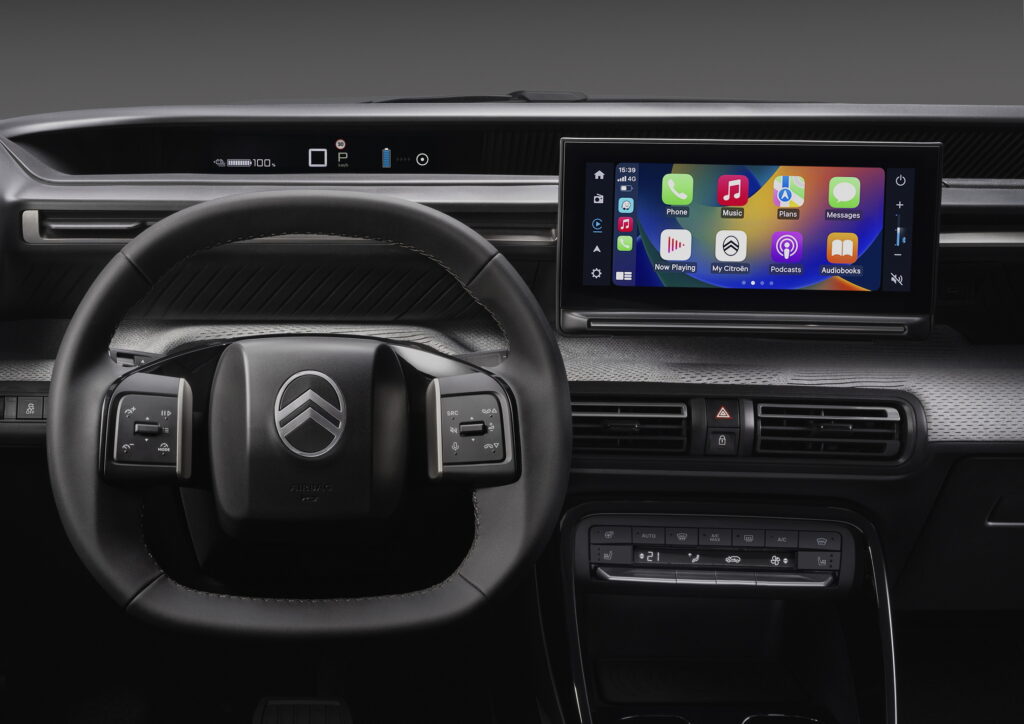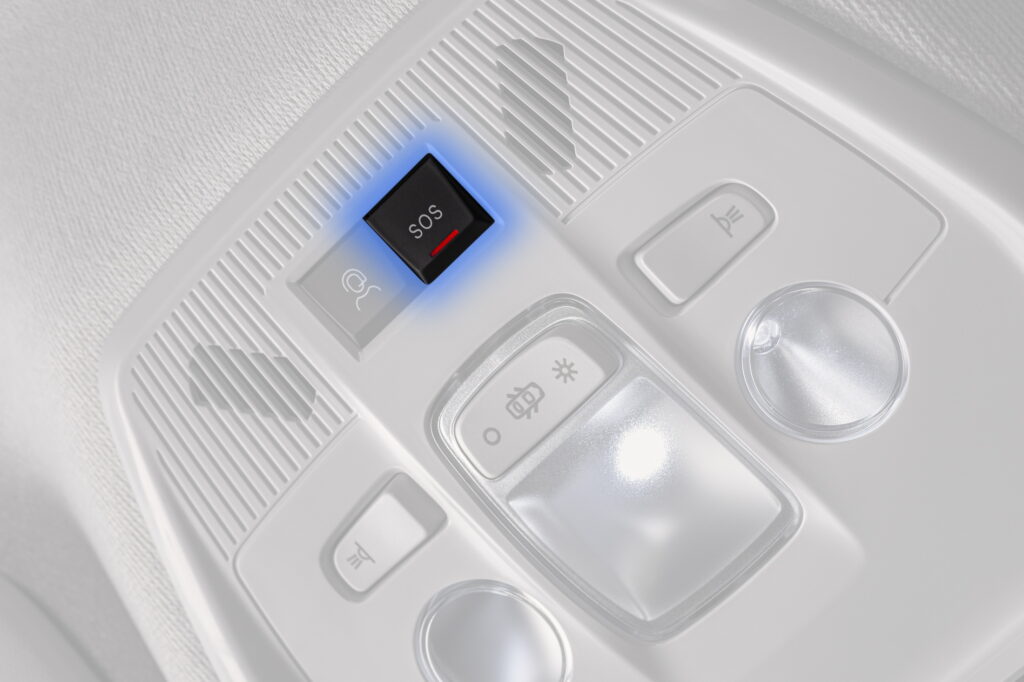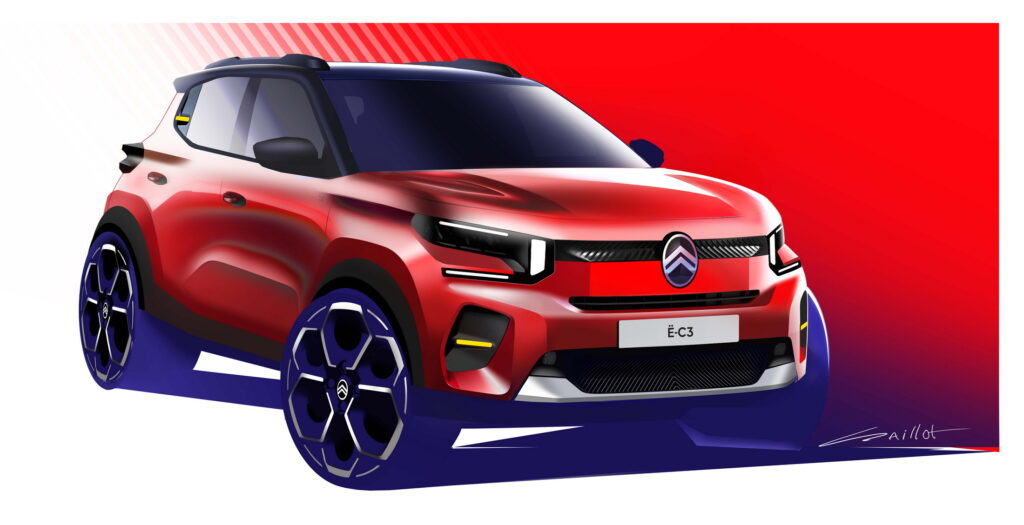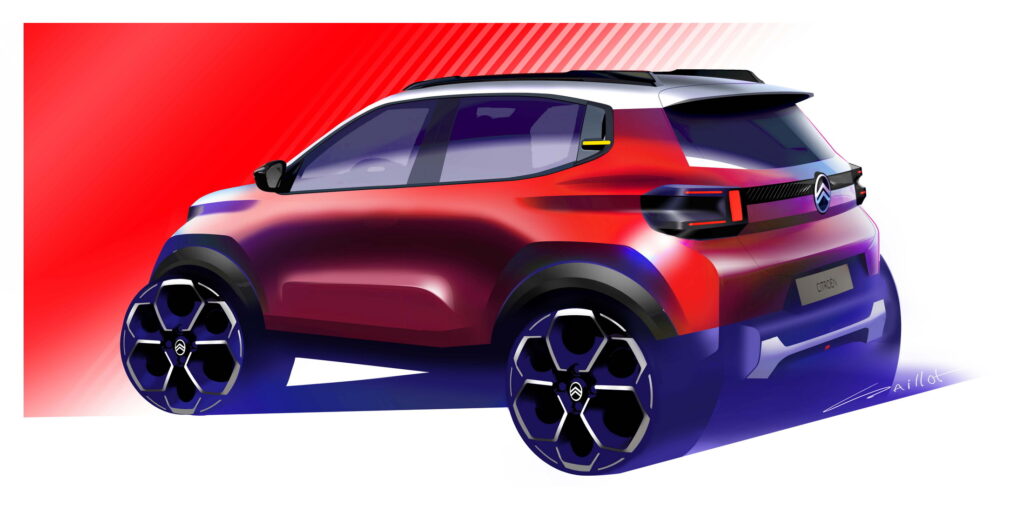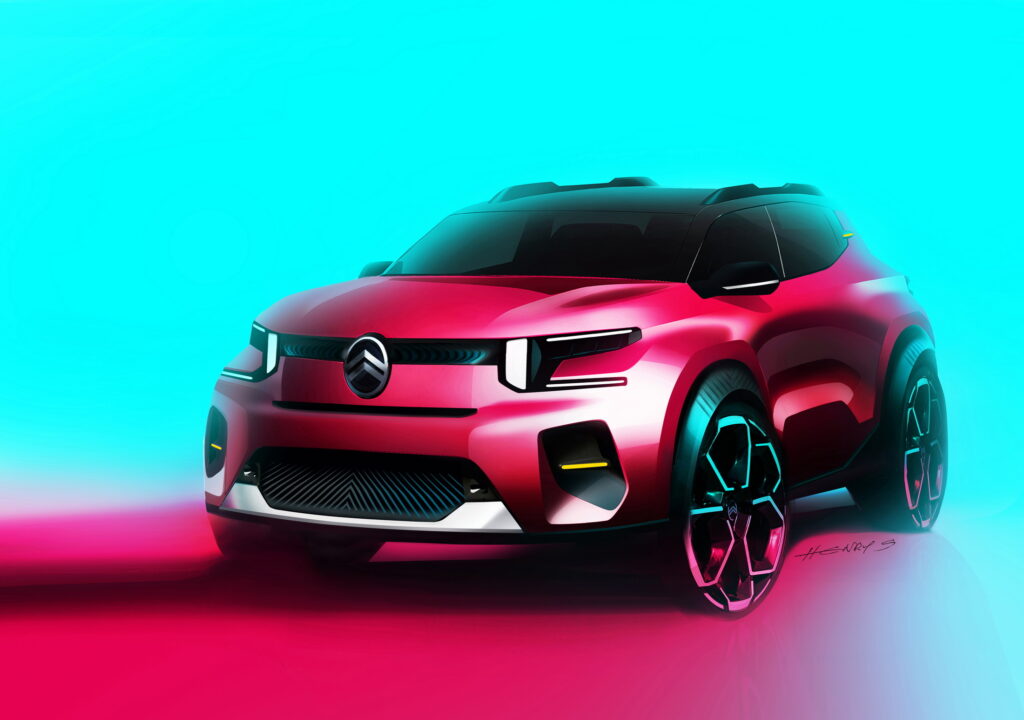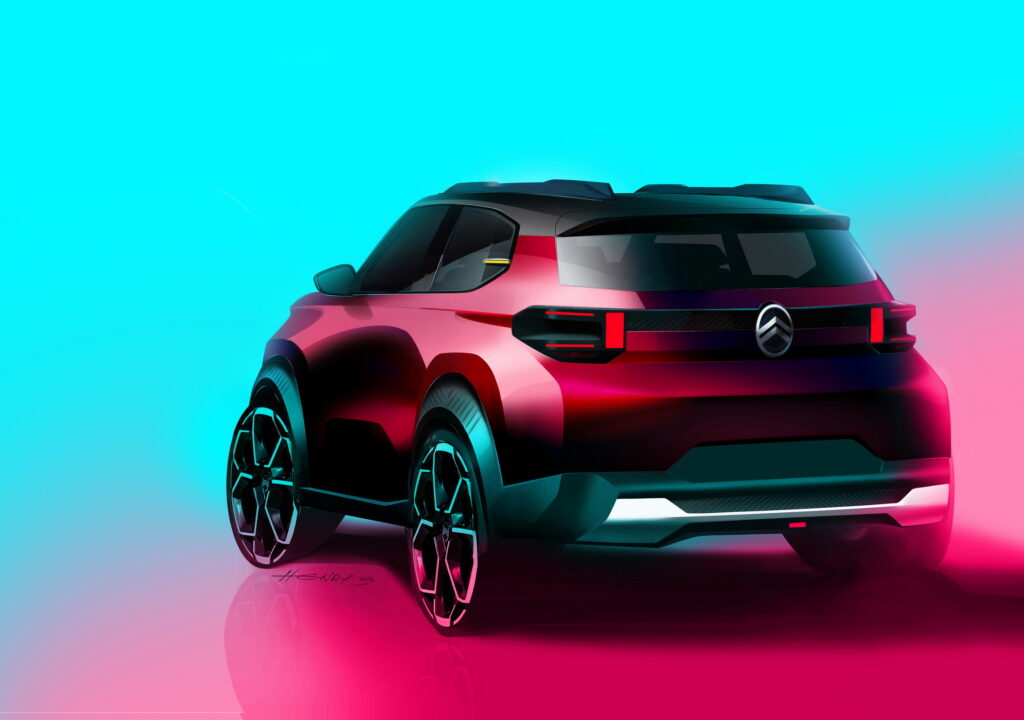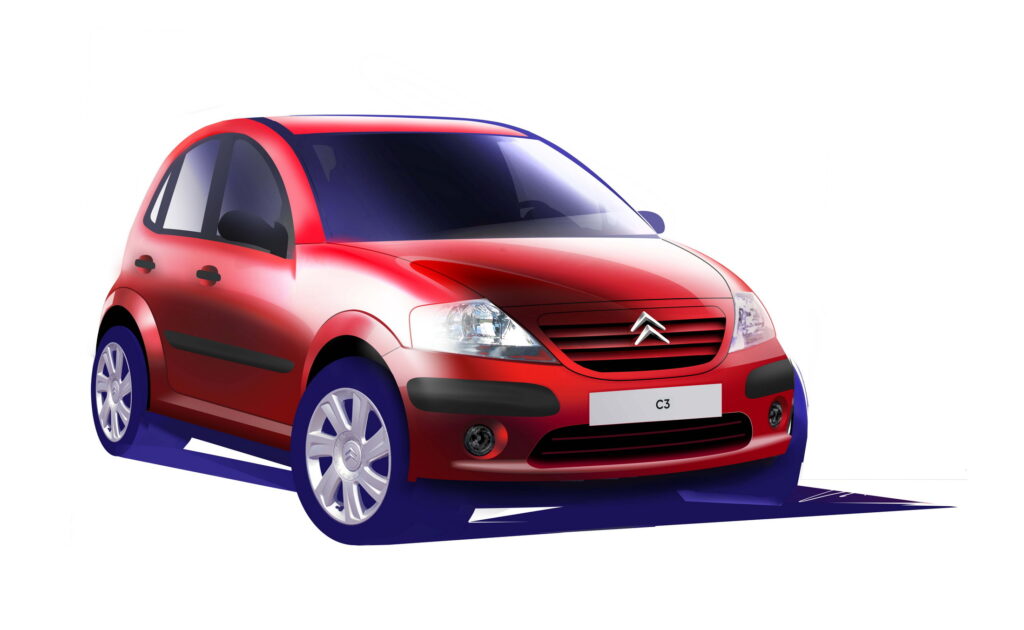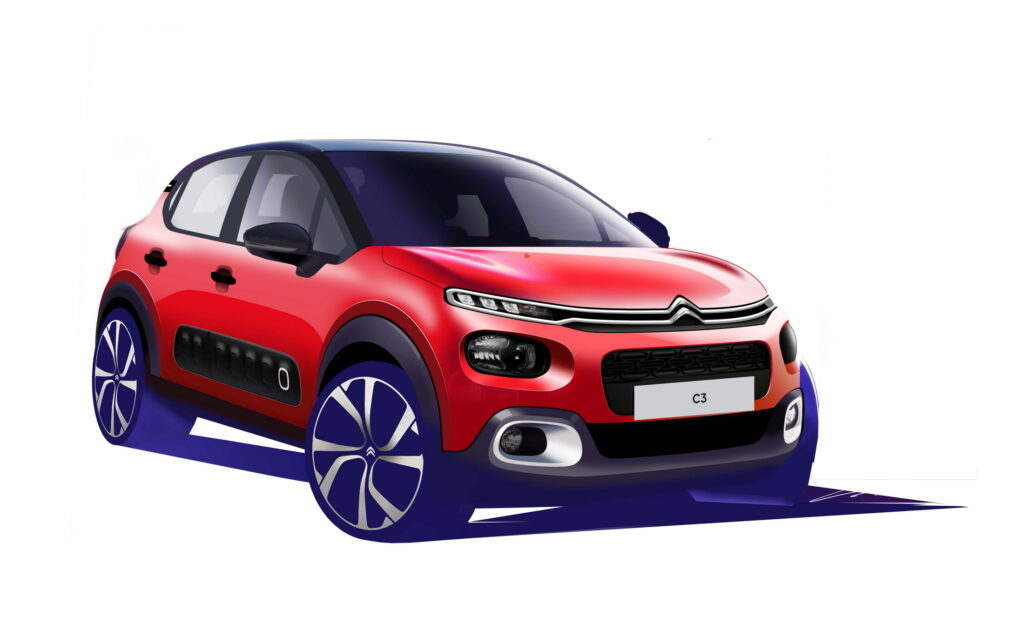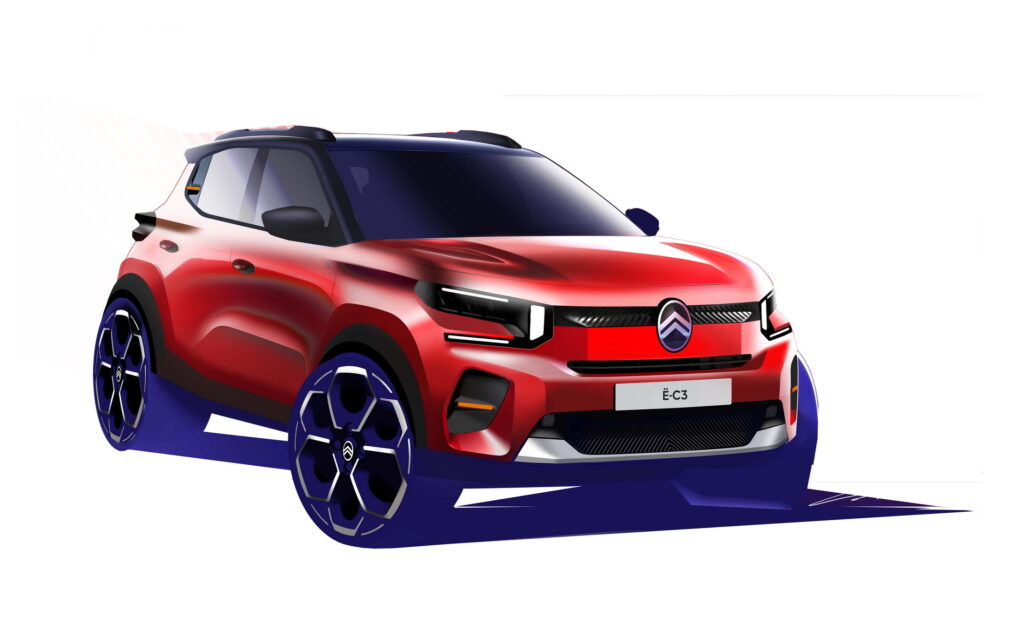Citroen took the wraps off the new e-C3, a fully electric supermini with crossover styling cues, aiming to be quirky, comfortable, and affordable. The starting price will be €23,300 ($24,643) with a cheaper electric variant coming in 2025 priced from €19,990 ($21,133). Besides the EVs, the French automaker also confirmed that there will be a petrol-powered Citroen C3 continuing the legacy of its predecessors.
The EU-spec model appears to be closely related to the Citroen New C3 that debuted two years ago and is already available in India and South America. The greenhouse, profile, and proportions are nearly identical between the two models. However, the European e-C3 boasts a redesigned face and a slightly different tail, both inspired by the Oli concept. Among the highlights are the LED headlights and taillights introducing Citroen’s new lighting signature, alongside the new oval emblem which makes its first appearance in the supermini.
More: What We Know About The 2025 Citroen C5 Aircross
Overall, the styling is boxier and more rugged than the outgoing Citroen C3, with the e-C3 adopting an upright stance and a more sculpted bodywork. The generous ground clearance of 163 mm (6.4 inches), the plastic cladding, the roof rails, and the decorative skid plats, make the e-C3 look more like a B-SUV rather than a small hatchback.
The e-C3 measures 19 mm (0.75 inches) longer, 6 mm (0.24 inches) wider, and around 80 mm (3.1 inches) taller than the outgoing C3. Still, the footprint is smaller than the family-friendly C3 Aircross which will grow even larger in the next-generation model that is coming next year and was officially teased with a 7-seater cabin.
Comfort-Focused Interior With New Tech Gimmicks
The outgoing Citroen C3 was the most comfort-focused model in the supermini segment and the new e-C3 follows the same principle. All trims and powertrain variants of the new generation come standard with an Advanced Comfort Suspension system featuring double progressive hydraulic stops. This setup which is a first to the city car segment, promises to offer a “flying carpet ride” – saving the “magic carpet ride” term for Rolls-Royce. Another important feature is the new Citroën Advanced Comfort seats, with extra foam making long-distance traveling nicer for our buts.
The dashboard of the e-C3 has a familiar layout with the previous generation, but everything has been redesigned. The most striking feature is the absence of an instrument cluster (analog or digital), with the most important bits of information appearing on the new Citroen Head Up Display.
Other highlights include a larger 10.25-inch touchscreen for the infotainment which is positioned higher, the new double-spoke flat-bottom steering wheel with integrated buttons, and the generously sized storage compartments on the dashboard, center console, and door cards. Thankfully, Citroen reverted to physical climate controls instead of integrating them into the touchscreen.
Furthermore, the company claims that the cabin of the new generation is significantly more spacious compared to its predecessor, offering greater visibility and easier ingress/egress due to the higher seating position. The boot has a capacity of 310 lt (10.9 cubic feet), which is 10 lt (0.35 cubic feet) more than before.
EV-Native Underpinnings, ICE Version Coming Too
Citroen says that the model is based on the “Smart Car platform” which was developed as EV-native. The French company didn’t get into specifics but it sounds more like an evolution of the tried-and-tested eCMP/CMP architecture rather than Stellantis’ new STLA Small.
The EV comes fitted with a single front-mounted electric motor producing 111 hp (83 kW / 113 PS). This motor is less powerful than the 154 hp (156 PS / 115 kW) unit found in the EU-spec Peugeot e-208 and Opel Corsa-e siblings, but a lot punchier than the 57 hp (43 kW / 57 PS) unit of the Indian-spec e-C3. According to the automaker, the EU-spec e-C3 accelerates from 0-100 km/h (0-62 mph) in 11 seconds and has a top speed of 135 km/h (84 mph).
Energy is sourced from a 44 kWh lithium-iron-phosphate (LFP) battery pack that is good for up to 320 km (199 miles) of WLTP range. This battery will be compatible with 100 kW DC charging, going from 20-80% in just 26 minutes (the same process takes 4 hours 10 minutes from a standard 7 kW AC charger).
Citroen announced it will offer a second EV variant and a petrol-powered C3, for those who are not ready to make the step to electric mobility. This model will likely use Stellantis‘ 1.2-liter Puretech three-cylinder petrol engine, although it is not clear if it will be the newer mild-hybrid version.
The new Citroen e-C3 will be produced at the Stellantis’ Trnava plant in Slovakia. It will go on sale in European markets in Q2 2024 with a fixed starting price of €23,300 ($24,643). This figure slightly undercuts the target price of upcoming rivals including the Renault 5 and the VW ID.2. Furthermore, by 2025, Citroen will introduce an even more affordable variant of the Citroen e-C3 starting at €19,990 ($21,133) although this will have a shorter range of 200 km (124 miles). As for the ICE-powered model, chances are it will be even cheaper, rivaling the likes of the Dacia Sandero and the Skoda Fabia.








